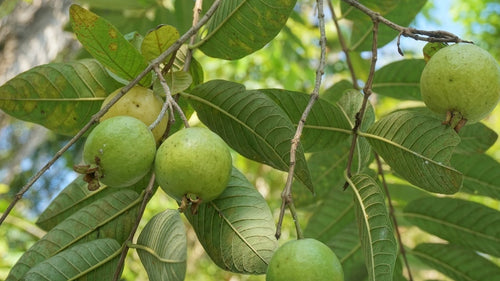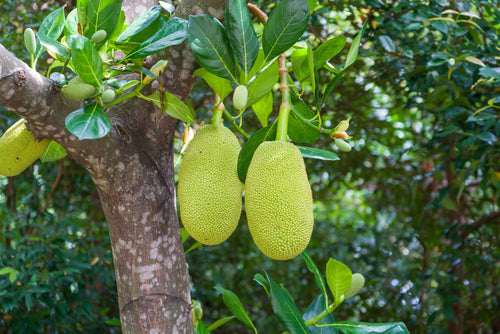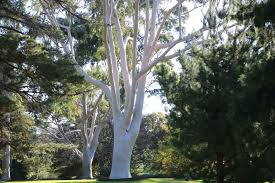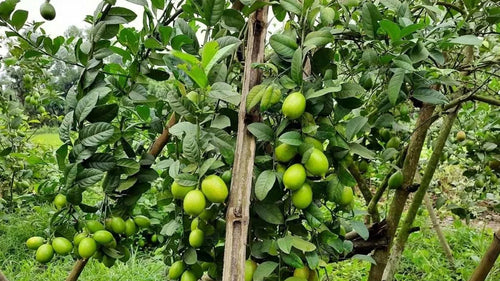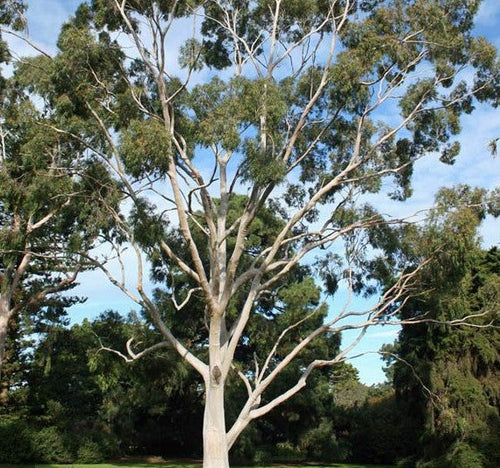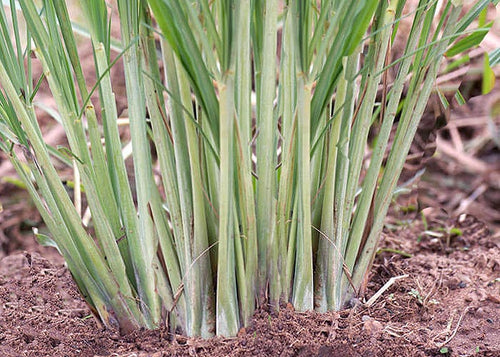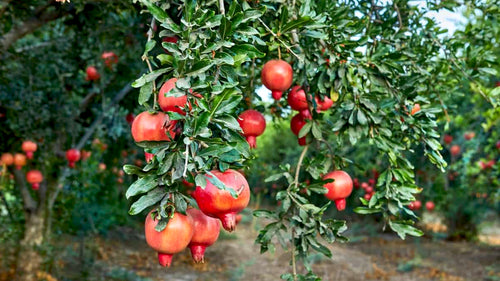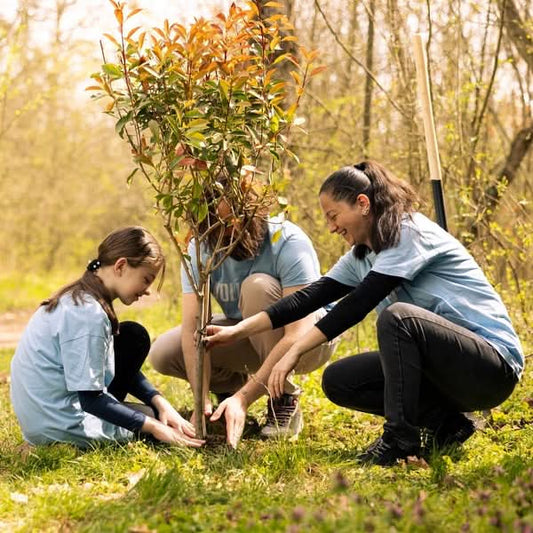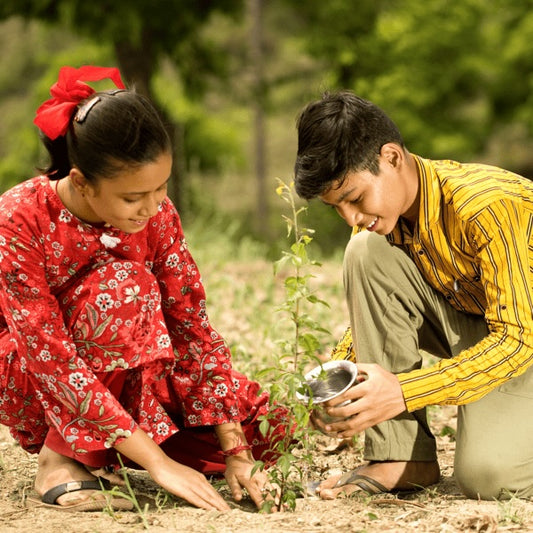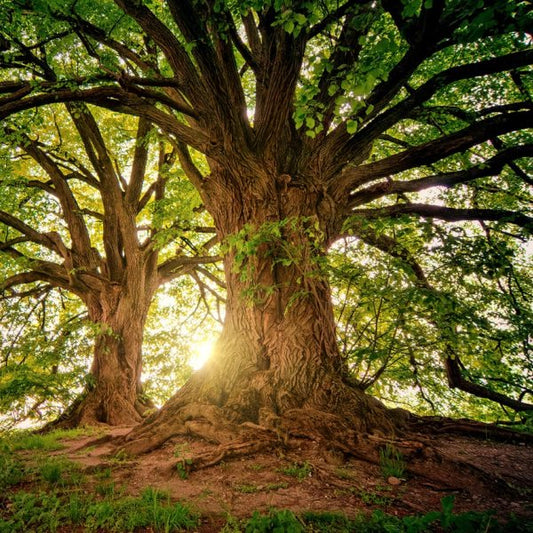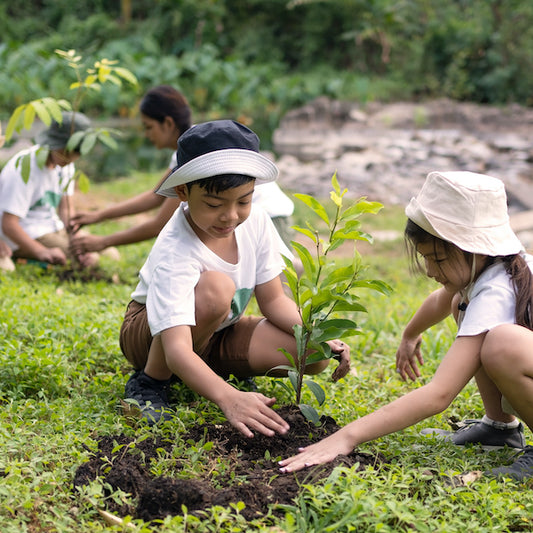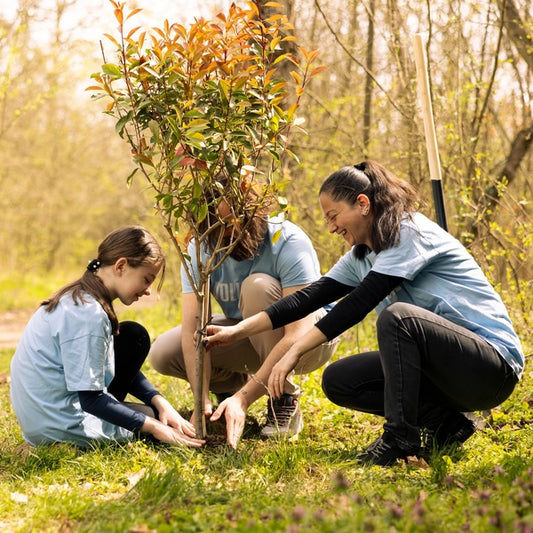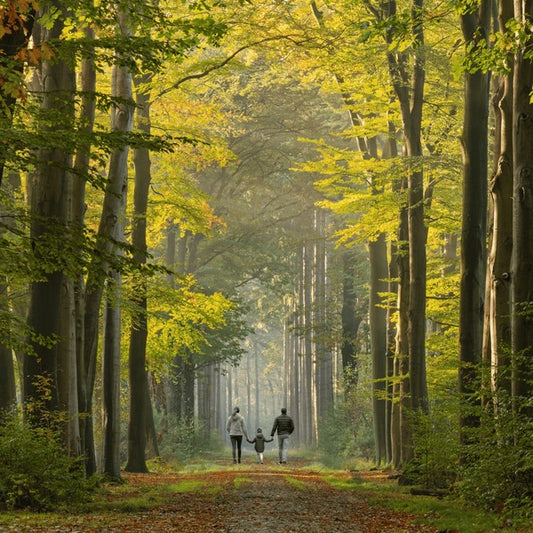Eco-Innovation in Action: Kaleris Plants for a Greener Future
Kaleris, a leader in cloud-based supply chain execution and visibility solutions, has extended its commitment to sustainability through a tree plantat Read more
Project Update 3



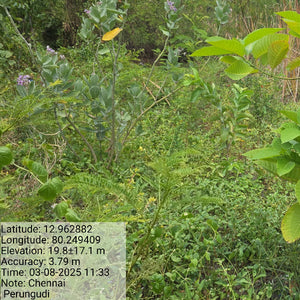




Project Update 2









Project Update 1












Digital Forest
Forest with 200 Trees planned
Want to plant your tree now?
Plant a Tree @ 299Eco-Innovation in Action: Kaleris Plants for a Greener Future
Kaleris, a leader in cloud-based supply chain execution and visibility solutions, has extended its commitment to sustainability through a tree plantation initiative rooted in the urban forest concept. Recognizing that sustainability starts with small, meaningful actions, this initiative represents a tangible step toward a greener future.
By planting trees in urban spaces, Kaleris actively contributes to enhancing biodiversity, improving air quality, and mitigating climate change. Their employees take part in this initiative, reinforcing the company’s dedication to both environmental well-being and community engagement. Just as Kaleris eliminates inefficiencies in global supply chains, they are addressing environmental imbalances by fostering green spaces that benefit both people and the planet.
This plantation drive is more than just an ecological effort it embodies Kaleris’ vision of creating a sustainable world for future generations, ensuring that their innovation extends beyond technology and into environmental stewardship. Guided by the purpose “One Earth, One Chance, One Tree at a Time,” this initiative reinforces Kaleris’s dedication to building a sustainable and resilient future.
Project Planning & Execution
No. of trees: 200 Trees
Plantation Location: TANSIDCO ECO PARK, Estate 1st Main Rd, Industrial Estate, Perungudi, Chennai, Tamil Nadu 600096
Plantation Date: 21st February 2025
Name of Species: Sapota, Guava, Custard apple, Lemon, Mosambi, Jackfruit, Pomegranate, Kadamba, Papaya, Curry leaves
Species Selection & Its Benefits:
The species selected for Kaleris India Private Limited's urban forestry initiative were carefully chosen to align with the local ecosystem and maximise ecological benefits. The selected species—Sapota, Guava, Custard Apple, Lemon, Mosambi, Jackfruit, Pomegranate, Kadamba, Papaya, and Curry Leaves—offer a blend of ecological and nutritional benefits.
Fruit-bearing trees like Guava, Jackfruit, and Pomegranate are rich in vitamins and antioxidants, supporting both health and food security. Lemon and Mosambi aid in hydration and immunity, while Papaya enhances digestion and boosts immunity. Trees like Kadamba and Sapota contribute to biodiversity and provide shade. Medicinal and culinary plants, such as Curry Leaves, add cultural value and promote wellness. Together, these species support sustainable food systems, green cover, and community health.
These species were chosen not only for their environmental benefits, such as improving air quality, preventing soil erosion, and enhancing water retention, but also for their ability to provide shade, reduce urban heat, and offer food sources for local communities. This thoughtful selection ensures that the trees serve both ecological and social purposes, creating a lasting positive impact on the urban landscape.
Beneficiaries Details
-
Target Population: Employees, stakeholders, and local community members of Chennai
-
Age Group: All age groups focus on adults to seniors
-
Gender: Inclusive of all genders
-
Social & Economic Status: Open to all social and economic backgrounds, emphasising community involvement
Planting Methodology and Its Advantages
Urban Forestry: An urban forest is a network of trees, shrubs, and vegetation strategically planted in urban areas to enhance biodiversity, improve air quality, reduce the urban heat island effect, and provide green spaces for community well-being. It helps mitigate climate change by absorbing carbon dioxide, promotes mental health through accessible green areas, and supports local wildlife by creating habitats. Urban forests play a vital role in building resilient, sustainable cities that benefit both the environment and the people who live in them.
Advantages of Urban Forest
-
Climate Regulation and Cooling Effect: Urban forests help mitigate the urban heat island effect by providing shade and cooling through transpiration, lowering temperatures in cities, reducing the need for air conditioning, and conserving energy.
-
Improved Air Quality: Trees absorb pollutants like carbon dioxide, nitrogen oxides, and particulate matter, leading to improved air quality and reducing the risk of respiratory illnesses in urban areas.
-
Stormwater Management and Flood Prevention: Urban forests improve the soil’s ability to absorb and retain water, reducing stormwater runoff, preventing flooding, and promoting groundwater recharge, thus helping manage water resources efficiently.
-
Soil Erosion Control: The deep root systems of trees prevent soil erosion, especially in areas with heavy rainfall or steep slopes, stabilizing the land and reducing soil loss in urban environments.
-
Aesthetic and Recreational Value: The transformation of unused spaces into green zones adds aesthetic value to the area and provides employees and local communities with recreational spaces, making the workplace more enjoyable.
-
Enhanced Community Engagement and Well-being: Urban forests provide accessible green spaces where communities can engage in recreational activities, improving mental health, reducing stress, and fostering a sense of environmental stewardship among residents and employees.
-
Increased Property Value: Properties located near urban forests or green spaces tend to have higher market values, benefiting local property owners and increasing the overall appeal and livability of the area.
-
Noise Reduction: Urban forests act as natural sound barriers, reducing noise pollution and creating quieter, more peaceful surroundings.
Activities During Tree Plantation
The tree plantation drive at Perungudi Eco Park, Chennai, was marked by active employee participation, fostering a strong sense of environmental responsibility and teamwork. The event was carefully structured to ensure smooth execution and meaningful engagement.
In preparation for the plantation, the site was readied with pre-dug pits, and saplings were carefully placed and positioned for optimal growth. Employees actively took part in planting native and fruit-bearing trees, deepening their understanding of sustainable practices and the ecological benefits of urban greening. Their hands-on involvement created a more immersive and fulfilling experience.
The plantation drive concluded with a reflection session, allowing participants to appreciate their contributions towards a greener environment. The initiative reinforced Kaleris India Private Limited’s commitment to sustainability, employee engagement, and corporate environmental responsibility.
Conclusion Elements
Impact
Direct Impact
|
Parameters |
Values |
References |
|
No. of Trees Planted |
200 |
|
|
Green Cover (Acres) |
0.03 |
|
|
Carbon Sequestration Potential (KG) |
20 |
Small to medium-sized trees can sequester around 10–48 kilograms (22–106 pounds) of CO₂ annually. https://onetreeplanted.org/blogs/stories/how-much-co2-does-tree-absorb |
|
Carbon Sequestration by 200 mature trees ( Tons/year) |
4 Tons |
No. of Trees x Carbon Sequestration by 1 mature tree per year |
|
Carbon Credit Equivalent |
4 Tons |
One carbon credit is equivalent to one tonne of carbon dioxide or the equivalent amount of another greenhouse gas. |
|
Carbon Footprint of an avg Indian Citizen (Tons/Year) |
1.8 |
|
|
Offsets Annual Carbon Footprint of (Adults) |
2 |
Carbon offset by 187 mature trees per year / Carbon Footprint of an avg Indian Citizen per year |
*This impact analysis is forward-looking (An urban-forest project matures in 3-5 years)
Indirect Impact
Community Impact
-
Improved Public Health: By improving air quality and reducing urban heat, the project indirectly contributes to better public health. The presence of green spaces encourages outdoor activities, which can reduce stress levels, promote mental well-being, and decrease the incidence of respiratory diseases.
-
Environmental Awareness: Involving communities in urban forestry raises awareness about environmental conservation and promotes sustainable practices in daily life.
-
Employee Morale: The initiative fostered a sense of pride and connection among employees, strengthening team bonds and their alignment with the company’s values.
-
Inspiration for Change: By showcasing the potential of urban forestry, the project has encouraged other organisations and local communities to undertake similar initiatives.
-
Cultural Shift: The initiative instilled a mindset of sustainability and environmental care among participants, creating advocates for green practices in their personal and professional lives.
Environmental Impact
-
Carbon Sequestration: The trees planted through Kaleris's urban forestry initiative absorb carbon dioxide, acting as carbon sinks and helping mitigate climate change by reducing greenhouse gas emissions.
-
Soil Health Improvement: The tree planting initiative enhances soil health by enriching it with organic matter, improving soil fertility and structure, which supports the growth of surrounding vegetation.
-
Erosion Prevention: Tree roots help stabilise the soil in urban areas, preventing erosion caused by wind and water, while safeguarding nearby properties and infrastructure from potential damage.
-
Biodiversity Conservation: By creating green spaces, the initiative supports local biodiversity, providing habitats for various species, pollinators, and beneficial insects, and enhancing the ecological balance in urban areas.
-
Water Cycle Regulation: The urban forestry project helps regulate the water cycle by improving water retention in the soil, recharging groundwater levels, and reducing surface runoff, leading to a more balanced and sustainable urban environment.
-
Microclimate Regulation: Trees planted through this initiative moderate temperature extremes, reduce wind speeds, and increase humidity, creating a favourable microclimate for both the community and the urban ecosystem.
Achievements
SDG Goals Achieved through Urban Forest
-
SDG 3: Good Health and Well-Being – The Kaleris’s urban forestry project enhances air quality and creates green spaces that promote physical and mental well-being, reducing stress and fostering a healthier urban lifestyle.
-
SDG 6: Clean Water and Sanitation – Trees play a crucial role in water conservation by enhancing groundwater recharge, reducing surface runoff, and improving overall water retention. Kaleris’s initiative supports sustainable urban water systems through afforestation and green infrastructure.
-
SDG 7: Affordable and Clean Energy – By mitigating the urban heat island effect, Kaleris’s tree plantation efforts help lower ambient temperatures and reduce reliance on artificial cooling. The shade provided by trees enhances energy efficiency and promotes a more sustainable urban climate.
-
SDG 8: Decent Work and Economic Growth – The initiative generates employment opportunities in tree planting, maintenance, and ecological restoration, contributing to local economic development and green job creation.
-
SDG 9: Industry, Innovation, and Infrastructure – Kaleris integrates sustainable urban forestry into infrastructure planning, promoting green innovation and enhancing urban resilience.
-
SDG 10: Reduced Inequalities – The initiative ensures inclusivity by engaging employees from diverse backgrounds in environmental conservation. By creating accessible green spaces, Kaleris promotes environmental equity and ensures that all communities, including marginalised groups, benefit from cleaner air, mental well-being, and recreational opportunities.
-
SDG 11: Sustainable Cities and Communities – Kaleris ’s commitment to urban afforestation contributes to creating more sustainable and resilient cities by increasing green cover, improving air quality, and enhancing urban biodiversity.
-
SDG 12: Responsible Consumption and Production – Kaleris ’s commitment to sustainability is reflected in its responsible approach to urban forestry, focusing on resource efficiency and long-term environmental benefits.
-
SDG 13: Climate Action – The plantation initiative actively supports climate action by sequestering carbon, reducing greenhouse gas emissions, and mitigating climate change effects through the expansion of green spaces.
-
SDG 15: Life on Land – By restoring green spaces with native and fruit-bearing trees, the initiative strengthens biodiversity, supports wildlife, and contributes to a thriving urban ecosystem.
-
SDG 16: Peace, Justice, and Strong Institutions – By fostering inclusive decision-making and community-led governance, the Kaleris strengthens local environmental stewardship, ensuring transparency and collaboration for sustainable urban development.
-
SDG 17: Partnerships for the Goals – The initiative thrives on collaboration with local communities, environmental organisations, and partners such as Grow Billion Trees. Kaleris strengthens environmental partnerships to drive impactful urban sustainability and afforestation efforts.
ESG Achieved through Urban Forest:
-
Environmental Impact: Kaleris ’s urban forestry initiative significantly enhances environmental sustainability. By planting diverse tree species, the company boosts biodiversity, creates habitats for wildlife, and supports local ecosystems. The trees act as carbon sinks, reducing CO2 levels and mitigating climate change. Additionally, the initiative improves urban climate resilience by regulating temperatures, reducing the heat island effect, and enhancing water retention, ensuring long-term ecological health for future generations.
-
Social Impact: Kaleris ’s urban forestry initiative fosters community engagement and well-being by encouraging local participation in tree planting and environmental awareness. The green spaces created improve air quality, promote physical activity, and enhance public health. The project generates job opportunities in tree planting and maintenance while promoting social equity by ensuring access to green spaces for all, including marginalised groups. These efforts build a more inclusive, resilient, and sustainable community.
-
Governance Impact: Kaleris demonstrates strong leadership and commitment to sustainability through its urban forestry initiative. The company ensures transparency and accountability by effectively communicating project plans and outcomes to stakeholders. By collaborating with environmental organisations and local communities, it amplifies the impact of its efforts. This approach aligns with best governance practices, achieving environmental and social goals while promoting long-term sustainable growth.
Building Communities
One of the most impactful outcomes of Kaleris ’s urban forestry initiative was the sense of unity and collaboration it cultivated. By involving employees, local communities, and volunteers, the project became a collective mission to create sustainable urban green spaces, fostering a shared commitment to a greener future.
-
Empowering Communities: Participants became active contributors, gaining knowledge about urban forestry practices and taking ownership of the initiative. This empowerment strengthened their connection to the environment and reinforced their role as environmental stewards.
-
Fostering Partnerships: The project brought together diverse stakeholders, including Kaleris, Grow Billion Trees, and local communities, highlighting the value of collaboration in achieving environmental and social goals.
-
Creating a Ripple Effect: As communities experienced the benefits of urban forestry, their enthusiasm inspired others to adopt similar practices, amplifying the initiative's positive impact across the region.
This initiative demonstrates that environmental sustainability thrives when rooted in collective effort. It’s not just about planting trees—it’s about planting hope, collaboration, and a shared vision for a healthier and greener future.
Commitment by Grow Billion Trees
-
Ensuring Tree Survivability: GBT prioritises native species, continuous monitoring, and soil health improvement using organic fertilisers. These efforts ensure sustainable growth and benefit communities.
-
Transparency & Accountability: GBT provides detailed reports on tree growth, survival rates, and carbon benefits, using geo-fencing and regular updates to maintain transparency and effectiveness.
-
Sustainable Plantation Efforts: GBT implements projects that balance environmental, social, and economic goals, addressing issues like urban heat islands and degraded farmlands. These efforts promote ecological balance, livelihoods, and long-term climate resilience.
-
Enhancing Ecosystem Health: By selecting native species and creating diverse habitats, GBT enhances biodiversity and ecosystem resilience, ensuring long-term ecological health and supporting wildlife.
-
Long-Term Impact: GBT’s initiatives tackle environmental challenges, foster climate resilience, and promote sustainable development while reducing carbon footprints.
Acknowledgment
We at Grow Billion Trees extend our heartfelt gratitude to all those who have contributed to the success of the urban forestry initiative across Chennai. This project, which combines environmental sustainability with employee engagement, would not have been possible without the support and collaboration of our dedicated employees, local authorities, and partners. Their collective efforts in planting and nurturing over 200 trees are helping create a greener and more resilient future for urban communities. We are thankful for their commitment to fostering biodiversity, improving air quality, and promoting a sustainable future.
To Kaleris India Private Limited: We sincerely thank you for your dedication to sustainability and employee engagement. Your innovative approach to urban forestry has laid the foundation for a greener, more resilient future in Chennai. Through your efforts, trees have been planted, fostering biodiversity, improving air quality, and creating lasting positive impacts on the environment. Together, we have created a legacy that will continue to benefit urban communities and contribute to a sustainable tomorrow.
To Our Ground Partners and Volunteers: Your expertise, dedication, and passion for environmental sustainability have been crucial to the success of Kaleris’s urban forestry initiative. Through your collaborative efforts, we have made meaningful strides in creating greener urban spaces and promoting biodiversity across Chennai. Your contributions have not only enhanced the environment but also fostered community engagement and awareness. Together, we are building a more sustainable future, and we look forward to continuing our partnership in creating a greener, healthier world for all.
Thank you for your unwavering support and commitment.
Closing Remarks
We are proud to have embarked on Kaleris India Private Limited’s journey of environmental sustainability through their urban forestry initiative in Chennai. This project has not only enhanced urban greenery but has also fostered a sense of community engagement and environmental stewardship. It highlights the power of collaboration, where every contribution, big or small, brings us closer to a healthier, more sustainable future. Guided by the belief—"One Earth, One Chance, One Tree at a Time"—this initiative serves as a reminder of the impact each action can have on our planet.
As we look ahead to the continued success of this initiative, we are committed to expanding our efforts and inspiring others to join us in creating lasting positive change. Together, we are laying the foundation for a world where urban sustainability, community empowerment, and responsible practices thrive.
Thank you to everyone who has been part of this meaningful endeavor. Let’s continue working together to make a difference for today and future generations.
Trees for Corporates
Trending
Most Popular
1. Urban Green Spaces
Urban green spaces are the lungs of the city, and Kaleris knows this well. By planting trees in urban areas, Kaleris is working towards transforming concrete jungles into vibrant ecosystems. Not only do green spaces improve the aesthetic appeal of cities, but they also offer numerous health benefits to residents, from reducing stress to encouraging outdoor activities. Trees act as natural air filters, capturing pollutants and providing cleaner air, while also cooling down urban environments, which is crucial in combating the urban heat island effect. Kaleris' initiative goes beyond just planting trees; it’s about creating long-lasting, thriving urban forests that will benefit communities for years to come.
2. Urban Forestry
Urban forestry is the art and science of managing trees and green spaces within cities, and Kaleris has mastered it with their tree plantation initiative. Their urban forestry project integrates nature into city planning, creating green corridors that support biodiversity and improve quality of life. Kaleris focuses on selecting native tree species that thrive in urban settings, ensuring that the planted trees adapt well to the environment while providing essential ecological services. Their initiative also brings communities together, fostering a deeper connection to nature and making cities greener and more sustainable places to live.
3. Carbon Sequestration
Carbon sequestration is a vital process for combating climate change, and trees are the superheroes of this effort. By absorbing carbon dioxide, trees play a significant role in reducing greenhouse gases in the atmosphere. Kaleris’ urban forest initiative actively contributes to carbon sequestration by planting trees that capture carbon and store it for decades. This action helps mitigate the effects of global warming, making the world a little cooler, a little greener, and a lot more sustainable. Through their initiative, Kaleris is making a tangible impact on the environment and encouraging others to follow suit.
4. Sustainable City Development
Sustainable city development is at the heart of Kaleris’ urban forest initiative. The company is not just planting trees; they’re creating ecosystems that are resilient and self-sustaining. By integrating nature into urban development, Kaleris is promoting a harmonious balance between infrastructure and the environment. Their initiative supports biodiversity, reduces pollution, and helps with water management, ensuring that the cities of tomorrow are not just livable but also sustainable. With each tree planted, Kaleris is paving the way for smarter, greener cities.
5. Biodiversity Conservation
Biodiversity conservation is a priority in Kaleris' urban forest initiative. By planting a variety of tree species, the company is helping preserve local wildlife habitats and fostering ecosystems that support a range of flora and fauna. Urban forests created by Kaleris not only provide shelter for birds, insects, and small mammals but also contribute to a healthier environment. Protecting biodiversity in cities is crucial, and Kaleris’ initiative ensures that both plant and animal life thrive in harmony within urban landscapes.
6. Community Engagement
Community engagement is at the core of Kaleris' tree plantation initiative. By involving employees and local communities in the planting process, Kaleris fosters a sense of ownership and environmental responsibility. Participants in the tree-planting activities don’t just watch; they actively contribute to building a greener future. This collective effort strengthens community bonds and instills a shared purpose of environmental stewardship. Kaleris’ focus on community engagement not only promotes sustainability but also nurtures a sense of pride among everyone involved.
7. Climate Change Mitigation
Kaleris is actively working to mitigate the effects of climate change through their tree plantation initiative. Trees play a crucial role in absorbing carbon dioxide, one of the major contributors to global warming. By planting trees in urban areas, Kaleris is not only reducing the carbon footprint but also promoting a cooler, greener environment. This climate-conscious approach is a small yet impactful way to fight back against climate change, making Kaleris a leader in sustainable urban development.
8. Green Urbanization
Green urbanization is the future of cities, and Kaleris is leading the way with its tree plantation initiative. By incorporating greenery into urban design, Kaleris helps cities become more livable, sustainable, and eco-friendly. The urban forest concept goes beyond just beautifying spaces; it’s about creating a symbiotic relationship between people and nature. Kaleris’ efforts in green urbanization enhance urban resilience, reduce environmental stress, and ensure that future generations inherit cities that are both modern and environmentally responsible. Their initiative proves that cities don’t have to be concrete jungles; they can be lush, green, and thriving urban forests.
FAQ
What is Kaleris' tree plantation initiative about?
Kaleris’ tree plantation initiative is a commitment to transforming urban landscapes into greener, more sustainable environments. By planting trees within cities, we aim to improve air quality, enhance biodiversity, and mitigate the effects of urbanization. This initiative not only contributes to environmental well-being but also engages employees and local communities in creating thriving urban forests that will benefit future generations.
How does Kaleris support urban forests through tree plantation?
Kaleris is dedicated to supporting urban forests by planting trees in carefully selected city spaces. This initiative promotes biodiversity, reduces pollution, and enhances urban resilience to climate change. Our efforts focus on creating green corridors that provide essential ecological services, making cities more livable and sustainable for all.
What are the benefits of urban forests in cities?
Urban forests offer a variety of benefits, including improving air quality by reducing pollutants, providing shade to combat urban heat, and enhancing the well-being of city residents. They also support biodiversity by offering habitats for various species. Kaleris’ urban forest initiative plays a vital role in creating healthier, more sustainable cities for future generations.
How do Kaleris' tree plantations contribute to sustainability?
Kaleris’ tree plantation efforts are an essential part of our sustainability strategy. By planting trees in urban areas, we contribute to carbon sequestration, helping reduce the impact of climate change. This initiative also fosters environmental awareness and promotes sustainable urban development by creating green spaces that benefit both nature and people.
How does Kaleris ensure the success of its tree plantation projects?
Kaleris ensures the success of our tree plantation projects by selecting the right species suited to urban environments. We focus on long-term care and maintenance to ensure that the trees thrive. Our collaboration with experts in urban forestry also helps us implement best practices, ensuring that each tree planted contributes positively to the local ecosystem.
How does Kaleris involve the community in its tree plantation initiatives?
Kaleris believes in the power of community engagement. Our tree plantation initiatives involve employees and local residents, fostering a shared sense of responsibility toward environmental conservation. By engaging in the planting process, participants feel a deeper connection to nature, making the project more impactful and fostering a culture of sustainability within the community.
What is the role of tree plantation in combating climate change?
Tree plantation plays a crucial role in combating climate change by absorbing carbon dioxide from the atmosphere. Trees help mitigate global warming by sequestering carbon, reducing pollution, and providing cooling effects in urban areas. Kaleris’ tree plantation initiatives contribute to this global effort, promoting a sustainable future by combating the negative impacts of climate change.
Why is urban green space important for cities?
Urban green spaces are vital for improving the quality of life in cities. They provide essential ecological benefits, such as air purification, heat reduction, and biodiversity conservation. Green spaces also offer recreational areas that improve mental health and well-being. Kaleris’ tree plantation efforts aim to enhance these spaces, making cities more sustainable and livable.
What types of trees does Kaleris plant in urban forests?
Kaleris plants a mix of native tree species that are well-suited to urban environments. These species are chosen for their resilience, ability to thrive in city conditions, and benefits to local wildlife. By focusing on native trees, we ensure that the planted forests contribute to the local ecosystem, providing sustainable green cover for future generations.
How does Kaleris measure the impact of its tree plantation efforts?
Kaleris measures the success of its tree plantation efforts through regular monitoring and assessment. This includes tracking tree survival rates, growth, and the positive environmental changes in urban areas, such as improved air quality and increased biodiversity. Our data-driven approach ensures that each project contributes meaningfully to the long-term sustainability of urban forests.
- Choosing a selection results in a full page refresh.
- Opens in a new window.



